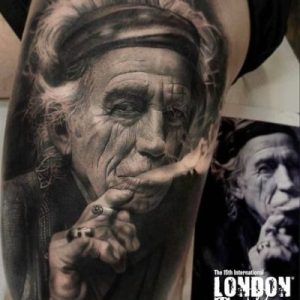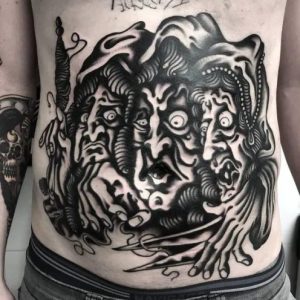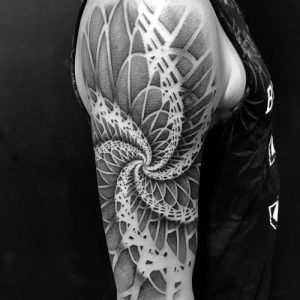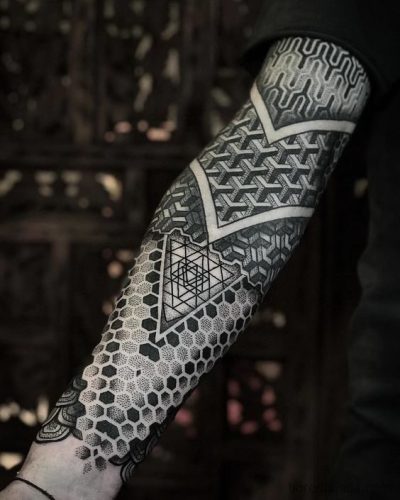
Tattoos have been used as a form of self-expression and art for centuries, and they continue to evolve with time. Geometric tattoos, in particular, have gained popularity in recent years for their intricate and visually striking designs. In this article, we delve into the psychology behind geometric tattoos, with a specific focus on the artistry of Paul Davies, a renowned tattoo artist known for his exceptional geometric creations.
Understanding Geometric Tattoos
Geometric tattoos are characterized by their precise lines, shapes, and symmetry. They often incorporate geometric patterns such as triangles, circles, squares, and hexagons to create mesmerizing designs. These tattoos can be both aesthetically pleasing and deeply meaningful, which makes them a fascinating subject of psychological study.
The Appeal of Geometric Tattoos
Symmetry and Balance: One of the primary reasons people are drawn to geometric tattoos is the sense of balance and symmetry they offer. Symmetry is inherently pleasing to the human eye, and it can evoke a feeling of harmony and order.
Precision and Attention to Detail: Geometric tattoos demand a high level of precision from the tattoo artist. Clients who appreciate fine craftsmanship are often attracted to these tattoos as they appreciate the attention to detail and the skill required to create them.
Personal Meaning: Beyond their aesthetic appeal, geometric tattoos often hold personal significance for the wearer. Each shape and pattern can symbolize different aspects of their life, beliefs, or experiences.

The Psychology of Tattooing
Tattoos, in general, are a form of self-expression. They allow individuals to communicate their identity, beliefs, and experiences to the world. The decision to get a tattoo is often influenced by psychological factors such as:
Identity and Self-Expression: Tattoos can serve as a way for individuals to define their identity and express themselves. Geometric tattoos, with their precise and structured designs, may reflect a desire for order and control in one’s life.
Emotional Healing: Some people turn to tattoos as a means of healing and recovery. Geometric tattoos can symbolize transformation and growth, serving as a reminder of personal strength and resilience.
Empowerment: Tattoos can be empowering, allowing individuals to take ownership of their bodies and make choices about how they are adorned. Geometric tattoos, with their bold designs, can give a sense of empowerment and confidence.
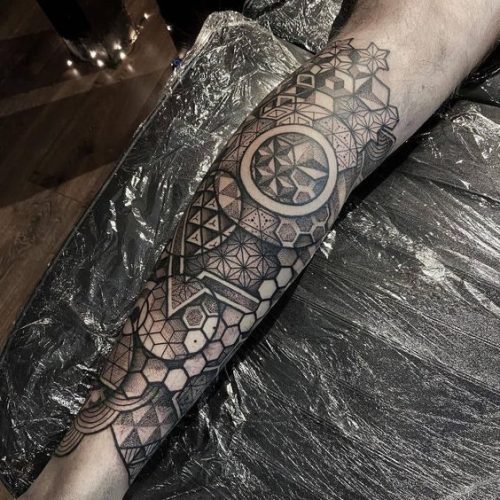
The Artistry of Paul Davies
Paul Davies is a tattoo artist who has gained international recognition for his mastery of geometric tattoo designs. His work is celebrated for its precision, creativity, and the emotions it evokes. Let’s explore some of the psychological aspects of his artistry:
Intricate Patterns: Davies’ tattoos often feature intricate patterns that demand the viewer’s attention. The complexity of his designs can symbolize the depth of human emotions and experiences.
Unique Combinations: Davies is known for combining various geometric shapes and patterns in his work. This diversity can be seen as a representation of the complexity of the human psyche, where different aspects of one’s personality come together to form a unique whole.
Personal Connection: Clients who choose Davies as their tattoo artist often share a personal connection with his work. His artistry resonates with them on a deep level, which speaks to the psychological impact his tattoos can have.
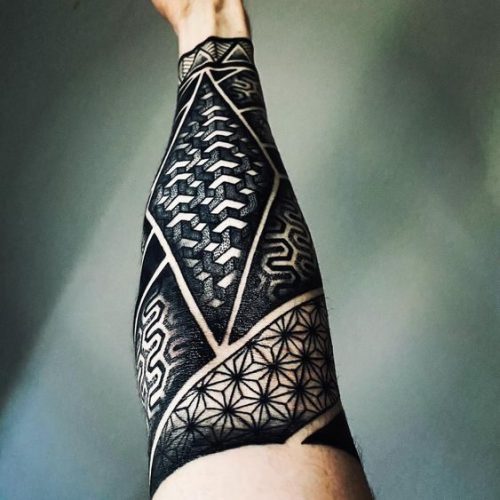
Geometric tattoos, as exemplified by the artistry of Paul Davies, are not merely skin deep. They represent a fusion of aesthetics, craftsmanship, and psychology. They offer individuals a unique canvas to express their identity, emotions, and experiences, making them a powerful form of self-expression and art in the world of tattooing. Whether you’re a tattoo enthusiast, an artist, or simply curious about the psychology of tattoos, exploring the world of geometric tattoos is a journey worth embarking on.


